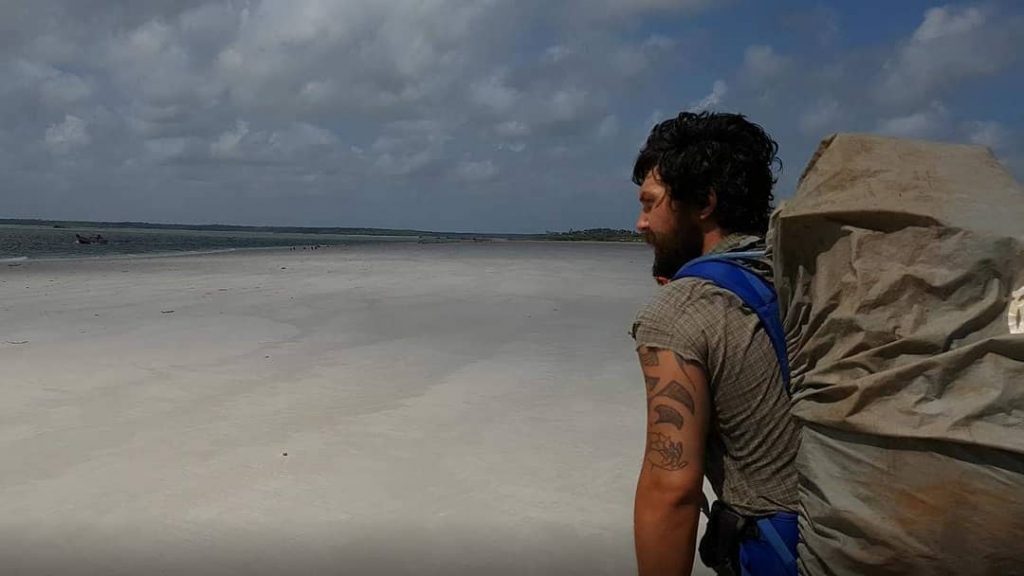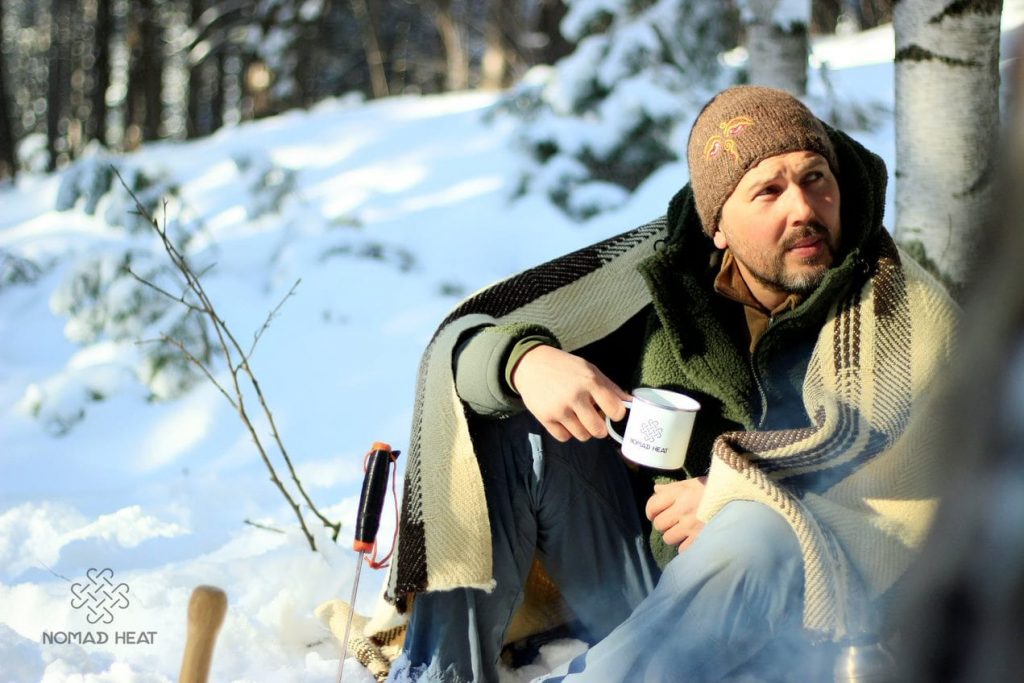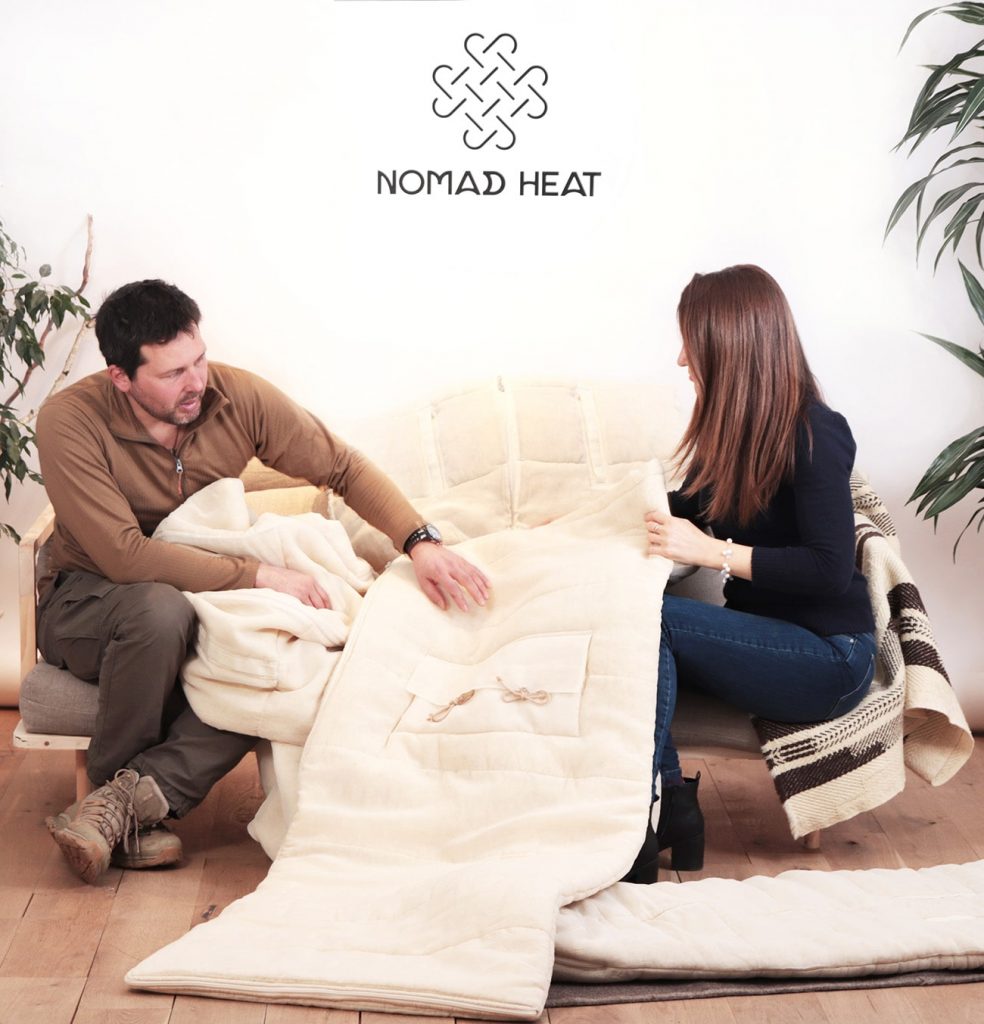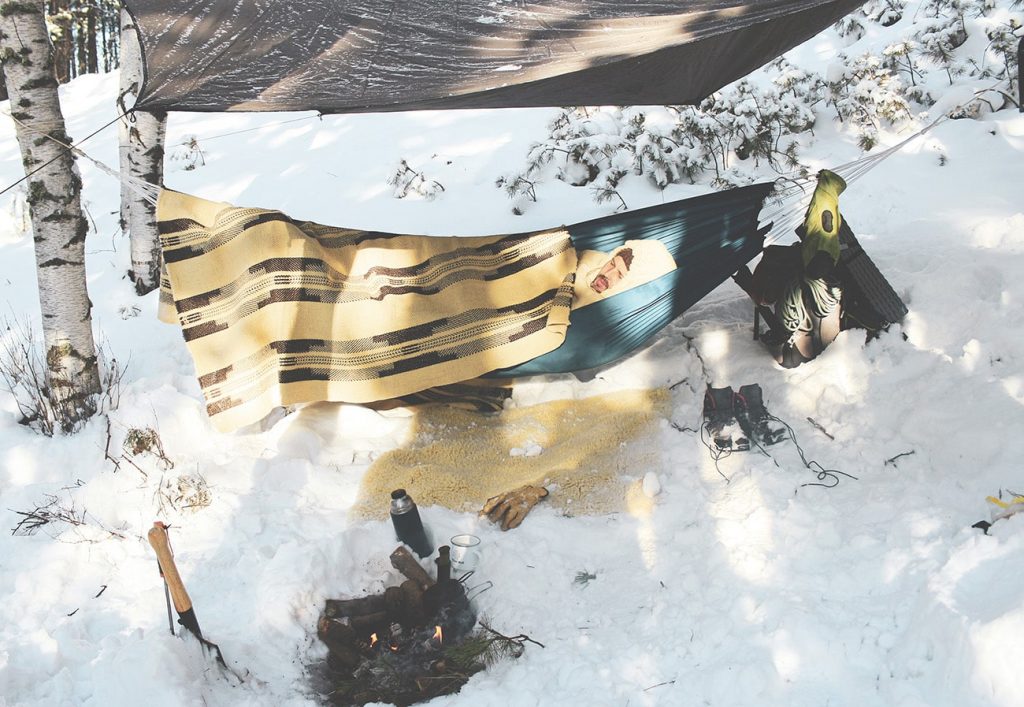
This is a story about a person with ancient knowledge running in his veins, a person who knows the nomad ways and is aware of what it takes to survive in the wild. Philip Lhamsuren is the adventurer behind the Nomad Heat product line, which focuses on creating handmade sleeping bags from natural and pure wool designed for environment-friendly camping. As an organic extension of Home of Wool, Nomad Heat finds inspiration in Philip’s rich life and experience. To find out who is Philip and how he became part of our mission, read this article.
Philip Lhamsuren
Few people in this world can say or show through their actions innate and primal wisdom. Philip Lhamsuren is one of them. His life deserves to be shared in the form of an adventure novel or film, but at the core of Philip’s experience lays something so archaic that our modern tools for storytelling would only scratch the surface.
He crosses Amazonia alone, relying only on his bicycle, canoe, and spirit. Philip spends a year in the French Foreign Legion and works as a wolf hunter in Mongolia. His body is adapted for the steppes, deserts, jungles, and mountain peaks of the world. The journeys he takes on often have Biblical proportions, yet he remains humble before Nature and himself.
“I do all of this because I’ve grown with it and I love it – I don’t do it to make myself feel important. This is at the heart of my lifestyle,” Philip says.

Philip Lhamsuren is an explorer and an artist. His free spirit and desire for wandering are the result of his upbringing, life’s hardship, and fate.” I grew up on the road. All is important, everything is part of man’s fate and karma,” Philip says.
From a young age, he clashes with life’s adversities. After spending a year and a half in a Chinese refugee camp, Philip meets people from all levels of the social and economic hierarchy. Through his suffering and destitution, he begins his journey of self-discovery. “It’s one thing to be poor and miserable, it’s another thing to flee from violence. By living with these children, by playing with people from all religions, you start to see,” Philip says.
Apart from the influence of his constant travels and contact with diverse people, Philip inherits the open mind and free thinking of his mother Ganhand Lhamsuren. His life’s experience and upbringing set the foundations of one inquisitive and bold stripling.
At the center of his personality are his Bulgarian and Mongolian origins. “I was heavily influenced by the East and the nomad way of thinking in which you need to be constantly moving and always reflect on, and welcome the hardships – you need to respect them because suffering is absolutely mandatory in life,” Philip says.
He is inspired by the simplicity of the nomad ways. The idea of wandering through the horizon and living one with nature consumes him completely. “I like simple things, the simple and clear things, the truth. I like it when you are against yourself and not against nature,” he says. The deserts and steppes are his home and nature is his teacher. Philip slowly begins to absorb the traditional nomad ways and to get back in touch with his Mongolian roots.

Among the rough life and the even rougher nature of Mongolia, Philip realizes the true meaning of survival. Both strangers and relatives introduce him to the art of navigation and survival, while Philip himself learns to get lost and never give up.
“I broke out of my family’s intellectual bubble because I wanted to go back to my ancestors, to wild Mongolia. The Mongolia in which after Ulaanbaatar, the only big city in the country, begin nothing but endless mountains, steppes, deserts where nomads live the olden way,” says Philip.
Mongolian Wool
A key component for the survival of the nomad people of Mongolia is wool. According to Philip’s experience, without wool, the very existence of the nomad would be impossible in the hostile climate of the semi-deserts. “They need wool, they need the cattle they raise. It’s part of their life, without it, they can’t survive. Everything is connected to the wool, to the animal’s meat. Sheep, goats, camels, yaks, and horses – these are the five main species they raise.”
The strong winds and extreme temperature amplitudes are part of Mongolian nomadic life. Apart from the rough climate, the nomads are also pressured by limited food sources. The soil is poor and the water is scarce – the occurrence of an Agrarian revolution is impossible. The hostile environment and the weak vegetation force these people into a nomadic lifestyle. They live in constant pursuit of green pastures to feed their cattle and themselves.
“The Mongol cannot exist without his cattle. The pastures get eaten and need to be alternated. From 2 to 4-6 times per year, you can change your living location in the pursuit of pastures. The bigger the cattle, the more you need to move since they leave barren the grass region, and you need to find another source of vegetation. You need to move, that’s the nomad way,” Philip says.

The codependency between the nomad and his animal is best shown in their religious customs. “The nomads are interconnected with the earth. They have many pagan rituals and beliefs without which their world would cease to exist. They throw gifts at the spirits – Mongolian spirits, desert spirits, rock spirits, water, and sky spirits – this is the so-called shamanism,” Philip says.
At the center of ancient shamanism is the idea of sacrifice. The very offering of gifts is not an act of profligacy, but it’s a ritual investment. The nomad gives what they have now to receive it back when they have nothing. This pagan instinct is the fruit of their rough lives where the future is uncertain, and every action is bound to the survival of the individual.
The nomad knows how to adapt and to use what they need. Road life requires a minimalistic approach towards one’s households goods, personal belongings, and philosophy. The multifunctionality of an object or material is of utmost importance. This is why it’s no surprise that wool is deeply embedded in the culture of the Mongolian nomad.
“Wool is used in absolutely everything. The yurt itself is made out of wool, pressed wool. The clothes are made out of wool and lambskin – karakul. Deel, the national Mongolian dress, as long as a raincoat, is made out of lamb wool from the inside which is very clean, soft, and warm,” Philip says.
Wool is both a perfect insulator and breathable material that regulates temperature. Without it, the nomads wouldn’t survive the temperature amplitudes and the rough weather.” From wool, they make pullovers, socks, and underwear. It’s vital clothing when there is a lot of wind and the temperatures reach -45C and +50C. You can only imagine how resilient these people need to be to live in such conditions,” he says.
New Horizons
The millennia-old wisdom of the nomad left its print on Philip Lhamsuren. The boldness of the survivor mentality and the practicality of the Eastern philosophy shape him as a person that welcomes the unknown. Despite some reservations about his ability to function in the urban jungle, Philip enters the world of business. Impressed by the innovative thinking of Rosica Petrova, the Home of Wool founder, he decides to partner up with her, and the beginning of Nomad Heat takes place.
“Her enthusiasm made me take part in the enterprise. Someone has to push you to do the things you aren’t willing to do – this is why we need other people, to materialize all this. What made me pursue all this was that Rosica deals with wool, with natural materials. This is pure energy; energy which I respect and like – this is how it happened. I like the materials and her personality,” Philip says.

Rosica’s deep knowledge in the sphere of design and natural materials finds support in Philip’s flair for practicality. Nomad Heat starts off as a marriage between the millennia-old nomad wisdom and today’s need for environment-friendly and healthy products.
The sleeping bags are made out of wool, linen, and mulberry silk. The inspiration for the materials’ durability and the product’s multifunctionality comes from the nomad culture and philosophy. Philip borrows from the design of the national Mongolian dress called deel, which can serve as clothing, temporary shelter, or as a bed. ”Absolutely practical and it has been working for centuries. Out of the waistband (33ft), you can make a camp. This clothing has everything, this is the result of millennia-old experience. Let’s not forget that it’s made out of wool,” Philip says.
Precisely this ancient multifunctionality is embedded into the sleeping bags of Nomad Heat.”Even in the most perfect thing I have used, I see problems. If something is inconvenient, I simply remove it. I use what I have and need. Here I managed, without going overboard, to create this much-needed functionality. You can take out your hands and feet and go about your business without having to leave the sleeping bag. This is the amalgamation of things I have seen from other sleeping bags and my personal experience,” he says.

Apart from the carefully crafted design focused on mobility and deep sleep, the sleeping bags are adapted to withstand both hostile environmental factors and potential risks related to camping. According to Philip, wool is naturally flame-resistant and extremely durable – this protects it from tearing and ignition, which often can happen with synthetic materials during movement or placement near the fire.
In the life of a nomad, durability means security since the frequent replacement of any vital clothing or household goods could be fatal. In that way, wool naturally becomes central to the nomad ways due to its resilience and simple maintenance. This tenet is embedded in the sleeping bags of Nomad Heat.
“The product will be durable if the wool is maintained properly since this is a process that requires time – it shouldn’t get wet, it needs to be dried the right way – take it out in a windy and sunny spot,” Philip says. “Hygiene is directly correlated with the maintenance of our body, the same stands for all-natural materials.”

Of course, Philip Lhamsuren doesn’t impose his lifestyle on others. The sleeping bag is designed for nature lovers, for those who live between the city and the forest. The product is perfect for both amateurs and people with experience in the bushcraft world.
Despite the first impression Philip gives off with his adventures, it wouldn’t be right to call him an extremist. He follows what is true and he finds it in the wildest and most alive parts of the world. Unfortunately, the urban man has forgotten what is the cost of the most bare and simple of truths. For Philip, a person needs to learn how to make sacrifices and live outside the world of excess in order to reach a higher level of consciousness.
“Knowledge is not served on a silver platter – you can’t copy the homework and get an A – life doesn’t work that way. You need to pay a price, the more you give, the greater the return,” says Philip.

Leave a Reply